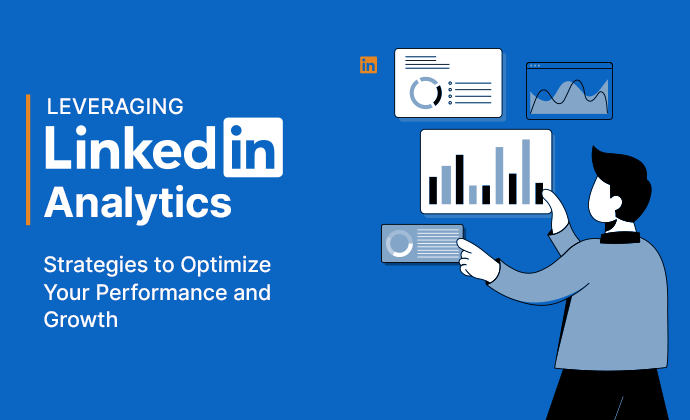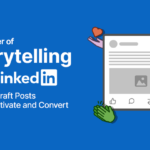
Introduction
In the digital world that we live in today, merely having a LinkedIn profile is no longer sufficient. To differentiate yourself from others and form meaningful relationships, it is crucial that you continually monitor your performance on the platform. There is plenty of data available through LinkedIn Analytics which can tell you what’s working, what isn’t and how to improve it. In this article, we will show you how to leverage LinkedIn analytics for better performance while driving growth.
What is LinkedIn Analytics?
LinkedIn Analytics is a feature that gives information about how well one’s profile, posts or overall presence are doing on LinkedIn. It helps track things like the number of views on your posts or profile as well as search appearances made by people looking for individuals with similar skill sets among other things. This information can be used in several ways depending on what an individual wants out of their time spent there.
Metrics You Should Be Monitoring
Profile Views
This metric shows the number of times your profile has been viewed over a specific period such as day, week, etc. If this number increases then it means that more people are interested in knowing who you are professionally hence they visit often.
Search Appearances
The search appearances figure recorded against each category under which one falls within his/her industry, e.g “marketing”, will indicate how frequently his/her name appears when someone searches anything related to the marketing field.
Post Views and Engagement
Further down the LinkedIn analytics dashboard, you will come across the post views section followed by engagement. This is where the number of people who saw your posts are shown including those providing feedback through likes, comments or shares. If many view it but few react, then consider changing the style of writing so that more readers can participate thus increasing chances for interaction among users.
Connection Growth
Growth in connections over time demonstrates whether networking efforts have been paying off or not. You should always aim at creating more links with professionals from different backgrounds within the same industry or across industries since diverse perspectives can significantly contribute towards personal development.
Review the Post Performance and Update Your Content Strategy
Recognize how well your posts are doing by means of LinkedIn Analytics. On the basis of these metrics, you can tell what kind of content is most popular with your target audience.
Content-Type
Whether they are articles, short posts, videos or infographics; find out what your audience prefers. Integrate more images and videos into your content strategy if posts with visuals get higher engagement.
Engagement Patterns
Look for patterns in engagement times and days of the week when posting gets a lot of responses. Posting during peak periods can increase the visibility of your content.
Engage Your Audience
On LinkedIn, interaction is key to establishing yourself as a thought leader in your industry. Use LinkedIn analytics to identify posts that drove high engagement and do more of them.
Responding To Comments
When people comment on your post(s), responding back helps build relationships while also encouraging further involvement between parties concerned; not only this but also lets the algorithm know that users find value in what you shared which results to increased visibility.
Asking Questions
Ask questions whenever making a post because such type has been found to attract greater number reactions than any other form.
Keep Optimizing And Experimenting
LinkedIn keeps changing as well as evolving thus requiring one’s strategy to change too so that it can remain effective over time. Therefore use LinkedIn analytics for testing various methods until you find what works best.
A/B Testing
Try out different headlines, post formats and content types and compare their performances using analytics in order to enhance your approach.
Regular Updates
Ensure adding latest accomplishments, projects worked on plus skills acquired recently since this ensures continued relevance of the profile leading to more suitable opportunities coming through LinkedIn continuously.
Conclusion
LinkedIn Analytics is a powerful tool that can help you optimize your performance and drive growth on the platform. By regularly monitoring key metrics, adjusting your content strategy, engaging with your audience, and expanding your network, you can enhance your LinkedIn presence and achieve your professional goals.
Remember that being active alone does not guarantee success; therefore, be strategic in everything that you do within this social media site by utilizing insights provided via linkedin analytics while also experimenting with different approaches.




